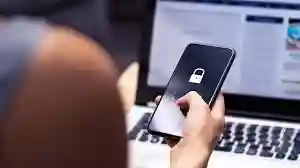How Can You Securely Protect Your Home Computer? Find Out!
How Can You Securely Protect Your Home Computer? With the increasing reliance on computers for both professional and personal purposes, it is critical to keep them safe. Whether you work from home or manage your company’s digital security, you must safeguard against hacking, malware, and cyber-attacks aimed at stealing personal information. The epidemic has blurred the line between business and home, emphasizing the importance of effective cybersecurity measures to keep your data safe.
Simple precautions, such as virus protection, safe passwords, and firewalls, can help decrease risk and avoid data breaches. Remember that IT security is a duty shared by everyone, including young folks, freelancers, and remote workers.
Security measures
With the correct security measures, you can keep ahead of hackers and preserve computer security at home and work.
1. Protect Your Computers and Devices
Using internet-connected gadgets for shopping, banking, and social networking exposes personal information such as financial and medical records. Without adequate protection, identity thieves or fraudsters may steal this information, or your computer may turn into a zombie drone that sends spam or becomes infected with nasty viruses that delay your device. To reduce these hazards and protect your family and privacy online, use good practices and safety precautions.
Keep your device updated.
Always get the recommended updates from your device’s maker or operating system provider. This includes critical software such as your web browser, which aids in threat prevention. Security technologies such as antivirus software, antispyware software, and firewalls will prevent assaults on your device. These software updates keep your operating system and other essential tools up-to-date and secure.
Install and update antivirus and antispyware software.
Antivirus software is critical because it protects your device against viruses that might destroy your data, slow down your system, or even allow spammers to send emails using your account. It is critical to maintain your software up to date and set it to scan every day, as well as to do a complete scan twice a month. For email security, keep an eye out for indicators of malware, such as a sudden rush of advertising or abnormal system performance.
Install Firewalls for Extra Protection.
A firewall is a software or hardware device that prevents hackers from gaining access to your computer. Hackers frequently dial random phone numbers or send pings to test whether systems respond. To keep yourself secure, configure your firewall to prevent communications and update it regularly. In addition, install built-in firewalls in your operating systems, such as DSL or cable modems, to allow only trusted sources and follow specific instructions to maintain them effectively.
Also Read Can You Really Use Wireless Headphones on a Plane?

2. Upgrade Your Authentication and Passwords
Use Strong and Unique Passwords
Using complicated passwords is the best approach to protect your personal information. Use robust authentication techniques instead of basic passwords. This helps to keep hackers out of your accounts, ensuring the security of your data.
Enable Two-factor authentication (2FA)
Set up two-factor authentication using one-time codes given to your mobile device to enhance security on social networking, email, and banking accounts. This feature guarantees that only the proper user gets access to the account and provides an extra degree of protection.
Use a password manager.
Managing many passwords and accounts may be tough. A password manager secures all of your unique passwords. To make it difficult to predict, use at least eight characters consisting of letters, numbers, and special characters. Avoid using birthdays or words found in dictionaries.
3. Secure Your Private Data Online
Here are three steps to protect your personal information. First and foremost, use caution when reading email, accessing websites, or purchasing online. Untrustworthy websites and data thieves may attempt to deceive you into disclosing your personal information, so always be aware of who you are sharing it with.
Refrain from clicking on suspicious links.
Phishing attempts are disguised as real emails requesting your password or Social Security number. If you receive an urgent notification informing you that your bank account has been frozen, consider twice before clicking any links. Verify the email address or phone the sender personally.
Be cautious with what you share on social media.
Limit the information you disclose on social media platforms. Hackers utilize social media posts to get access to your accounts and steal your identity. Use privacy settings to limit the exposure of your postings to only your trusted personal networks.
What You Should Know About Responding to Data Breaches
Take action if your personal information is taken from a firm you trust. Put a fraud warning on your credit file and freeze it to prevent fraudsters from creating new accounts in your name. For guidance, refer to the Attorney General’s information papers.
4. Protect your network.
If a neighbor or stranger joins your Wi-Fi network, it poses a security concern, particularly if your company’s work product or personal devices are on the same network. Change the default Wi-Fi login information and set a strong password. Many common routers utilize preset lists obtained on the internet, thus adopting a unique network name such as “FBI Mobile Unit #936” might assist in preventing unauthorized connections. Consider setting up a Guest network for family phones and Internet of Things devices, while keeping work PCs on a separate main network for further protection.
Create a Strong Wi-Fi Password.
A WiFi router is a physical device that regulates who may connect to your home wireless network. Change the default admin password to a secure password that you alone know. Configure your network such that any devices that join it must use the password. Be careful of which gadgets are linked, such as baby monitors, game consoles, and televisions.
Use a VPN for safe browsing.
To safeguard your devices, utilize a VPN and make sure the software is up to date. If at all feasible, allow automatic updates. If you have two computers at home—one for parents and one for children—ensure that everyone has their account with additional security filters enabled. To improve your security, always use a firewall and anti-virus software.
Manage Home Network Devices
Create lengthy, difficult-to-guess passwords that include a variety of characters, digits, and letters. Consider utilizing a password manager tool to maintain your passwords for each account or device. You may also add two-step authentication or multi-factor authentication as an extra tailored step to increase security wherever possible.
conclusion
Protecting your home computer is critical for keeping your personal information private and guaranteeing your family’s online safety. Using secure passwords, configuring firewalls, and installing antivirus software can help you limit the danger of malware and hacking attempts. Don’t forget to encrypt your Wi-Fi network, keep track of your children’s online activity, and utilize programs like Microsoft Defender for more security. Implementing these steps will contribute to the creation of a safe digital environment for both work and home usage, providing you with peace of mind in today’s connected world.






